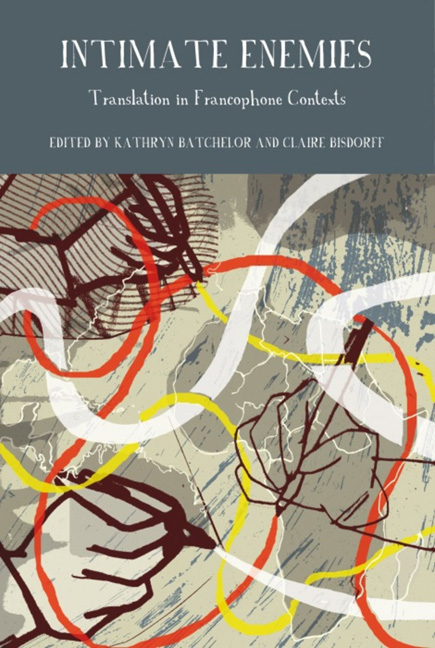Book contents
- Frontmatter
- Contents
- Illustration
- Acknowledgements
- Introduction: Translation – Formidable Enemy or Needed Friend?
- The Translation Market: Publishing and Distribution
- Writing and Translating in Practice
- Translation Challenges and New Avenues in Postcolonial Translation Theory
- Subverting Subversion? Translation Practice and Malpractice in the Work of Patrick Chamoiseau
- ‘Un art de la fugue’: Translating Glissant's Poetry, Fiction and Prose d'idées
- Postcolonial Intertextuality and Translation Explored through the Work of Alain Mabanckou
- Ananda Devi as Transcolonial Translator
- Translation and Current Trends in African Metropolitan Literature
- Notes on Contributors
- Index
Ananda Devi as Transcolonial Translator
from Translation Challenges and New Avenues in Postcolonial Translation Theory
- Frontmatter
- Contents
- Illustration
- Acknowledgements
- Introduction: Translation – Formidable Enemy or Needed Friend?
- The Translation Market: Publishing and Distribution
- Writing and Translating in Practice
- Translation Challenges and New Avenues in Postcolonial Translation Theory
- Subverting Subversion? Translation Practice and Malpractice in the Work of Patrick Chamoiseau
- ‘Un art de la fugue’: Translating Glissant's Poetry, Fiction and Prose d'idées
- Postcolonial Intertextuality and Translation Explored through the Work of Alain Mabanckou
- Ananda Devi as Transcolonial Translator
- Translation and Current Trends in African Metropolitan Literature
- Notes on Contributors
- Index
Summary
Introduction
Traditionally, the study of the translation of postcolonial literatures has tended to stress translation's neo-colonial replication of the unequal, vertical relations between European centre and formerly colonized margins. Indeed, the widely accepted view is that ‘translation has been at the heart of the colonial encounter, and has been used in all kinds of ways to establish and perpetuate the superiority of some cultures over others’ (Bassnett and Trivedi, 1999: 17). Another prevalent tendency in Translation Studies in general has been to depersonalize the process of translation, by focusing analysis on the final, target product – the translation – rather than on the identity of the translator, whose work as intercultural passeur thus goes largely unacknowledged. In the case of the French-language translation of David Dabydeen's 1996 novel, The Counting House, however, attention to the identity of the translator is key to uncovering a rich and complex network of non-hierarchical, horizontal connections between source and target texts and cultures. Such horizontal, ‘transcolonial’ connections, reflected in and created by translation, will be the focus of this chapter.
The Counting House was translated into French by Indo-Mauritian writer, Ananda Devi and published under the title of Terres maudites (2000). There are numerous parallels between the biographies of Dabydeen and Devi, and between the histories and cultures of their native countries, Guyana and Mauritius, that make the choice of Devi as translator of The Counting House particularly appropriate. David Dabydeen was born in Guyana (formerly British Guyana) of Indian descent and, since the age of twelve, has mainly lived, been educated and worked – as an academic, a critic and a prizewinning poet and novelist – in Britain. Ananda Devi was born and raised in Mauritius, moved to Britain to complete a doctorate in anthropology, and now lives in France, where, as well as being a successful literary writer, she works as a professional translator. Despite their temporal and spatial distance from the lands of their birth, both Dabydeen and Devi draw literary inspiration from the multicultural, heteroglossic, postcolonial societies in which they were raised, and from their common Indian heritage. The Counting House, for instance, tells the story of Rohini and Vidia, nineteenth-century indentured labourers, who naively leave the poverty of rural India for the promise of a better life and easy riches in Guyana.
- Type
- Chapter
- Information
- Intimate EnemiesTranslation in Francophone Contexts, pp. 216 - 234Publisher: Liverpool University PressPrint publication year: 2013

